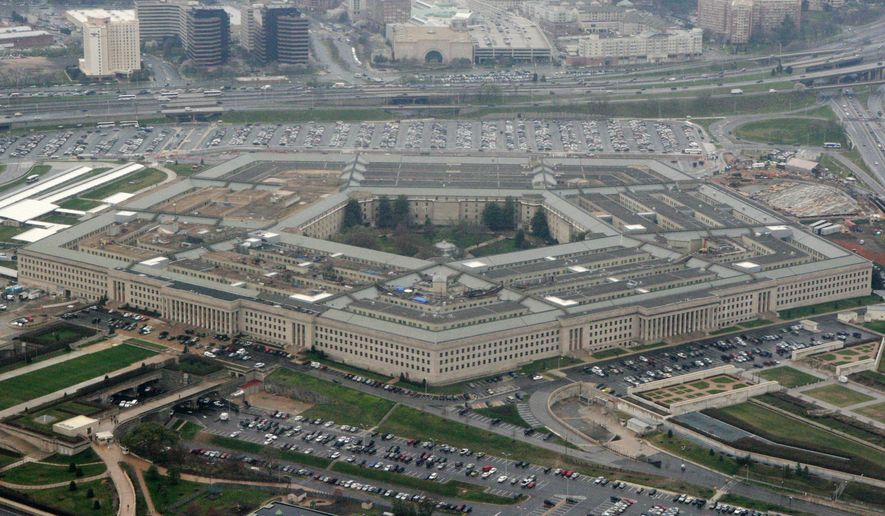The U.S. military’s historically high suicide rate is more a generational trait than a wartime offshoot, as millennial recruits join up carrying emotional baggage, a new research paper says.
The Pentagon says that the group most at risk of committing suicide is white males under 24 years old — which just happens to fit the profile of virtually all enlisted recruits.
In other words, the military’s suicide story is mostly about millennials, the birth cohort that sprung in the early 1980s, began reaching early adulthood with the change in century and started joining the military.
This cadre, the paper says, is more likely to come from single-parent homes compared to previous generations, has more adverse childhood experiences and suffers “diminished social integration.” In fact, the very reason some millennials join is because they seek the direction and bonding that the military offers.
These conclusions come in a new paper by two psychologists for the University of Utah’s National Center for Veterans Studies.
The psychologists looked at the reams of previous studies done on the issue as the Pentagon began reporting a sharp increase in suicides in the 2000s. They drew a general conclusion that the disturbing trend is a generational issue, noting that military suicide rates actually fell in previous wars.
“We have a societal issue here. I don’t think we have a military issue,” said retired Army Col. James Griffith, who co-wrote the paper. “We postulated something’s happening unique to this cohort, the millennials.”
“Nobody’s been really able to explain suicide in the military, particularly the increased prevalence rate since about 2006 and ’07,” he told The Washington Times. “People initially thought it was the war and/or having been exposed to combat.
“There are fewer adults per children, and they have less ability to internalize norms,” he said. “We suggest maybe this explains increases in suicide in the military.”
Col. Griffin writes: “The military is likely recruiting a more vulnerable cohort of soldiers as compared to earlier generations.”
Historically, the military saw a lower suicide rate than the civilian population. But after 2000, with the advent of Iraq and Afghanistan and, ultimately, millennials arriving at recruiting offices, that statistic changed. In fact, the suicide rate accelerated in 2006, five years into the war on terror.
The rate went from 10 suicides per 100,000 in 2001 to 16 per 100,000 in 2008. This 60 percent increase stemmed almost exclusively from the Army, the largest service, at more than 500,000 soldiers. The Army’s rate jumped from 10 suicides per 100,000 in 2001 to 22 per 100,000 in 2009.
The Marine Corps also increased sharply from 16 suicides per 100,000 in 2001 to 24 per 100,000 in 2009, according to a 2010 Army suicide-prevention report.
All told there were 434 suicides in the active force, reserves and National Guard in 2014.
From 2001 to 2009 the civilian rate held steady at 18 suicides per 100,000. But looked at by generation, there has been an overall increase in suicides among millennial civilians. Americans born between 1930 and 1934 had a rate of 17 suicides per 100,000. For 1955 to 1959, the rate was 28 suicides per 100,000.
For millennials born between 1985 and 1989, the civilian suicide rate increased to 37.8 per 100,000, more than double that of the Depression-era group.
Among the paper’s findings, written by Mr. Griffith and Craig J. Bryan, a clinical psychologist who is the executive director of the National Center for Veterans Studies:
• “Recruits disproportionately come from single-family households and households of adverse childhood experiences, both of which are associated with suicide risk.” The percentage of children not in two-parent homes in the U.S. has increased from 15 percent in 1967 to 32 percent in 2009.
• The increase in “non-marital births” has left millennials “less assimilated and idiosyncratic behavior less regulated and, thus, more vulnerable to behavioral health conditions.”
• Data from the National Longitudinal Study of Adolescent Health show that “youth living in single-parent household had increased odds of military enlistment independent of socioeconomic status.”
• The military has granted more medical and conduct waivers to recruits, up from 12 percent in 2003 to 20 percent in 2008.
• The all-volunteer military force provides a much smaller pool from which to select inductees. During Vietnam there were 4.5 million potential draftees over a two-year period; for the wars in Iraq and Afghanistan, there were 429,000 volunteers.
The two researchers conclude: “The risk factors described above likely make recent generations of soldiers more vulnerable to behavioral health problem, in general, and suicide, in particular, compared to previous generations.”
Mr. Griffith told The Times: “One primary risk factor for suicide is age, especially those aged 17 to 24, overlapping with what is known as millennials.”
• Rowan Scarborough can be reached at rscarborough@washingtontimes.com.




Please read our comment policy before commenting.